The Iskra is a 120 film folding rangefinder camera, 6x6 format, built from 1960 to 1963 by Krasnogorsky Mekhanichesky Zavod, KMZ , (Mechanical Factory of Krasnogorsk), Moscow. Iskra means "spark". It was made for professional photographers.
It
was largely inspired by the Agfa Super Isolette, including its ingenious automatic film advance. The camera shown seems to be a
late type 2. It has all good features from a top class camera in those
days: coupled rangefinder, a good lens (Tessar type, 4 elements in 3
groups), an automatic film advance which detects the film
itself and a double
exposure prevention.
Size (mm): 154 x 110 x 53
Weight: 880 g
Lens: Industar-58 3.5/75, closest focus 1 m
Shutter: not named, B. 1 - 1/500, F 3.5 - 22, Light value system
Finder: coupled rangefinder
Film advance: fully automatic, even first frame
Here are some photos of the camera. There is a short introduction to the use of it and how it feels at the bottom of the page.
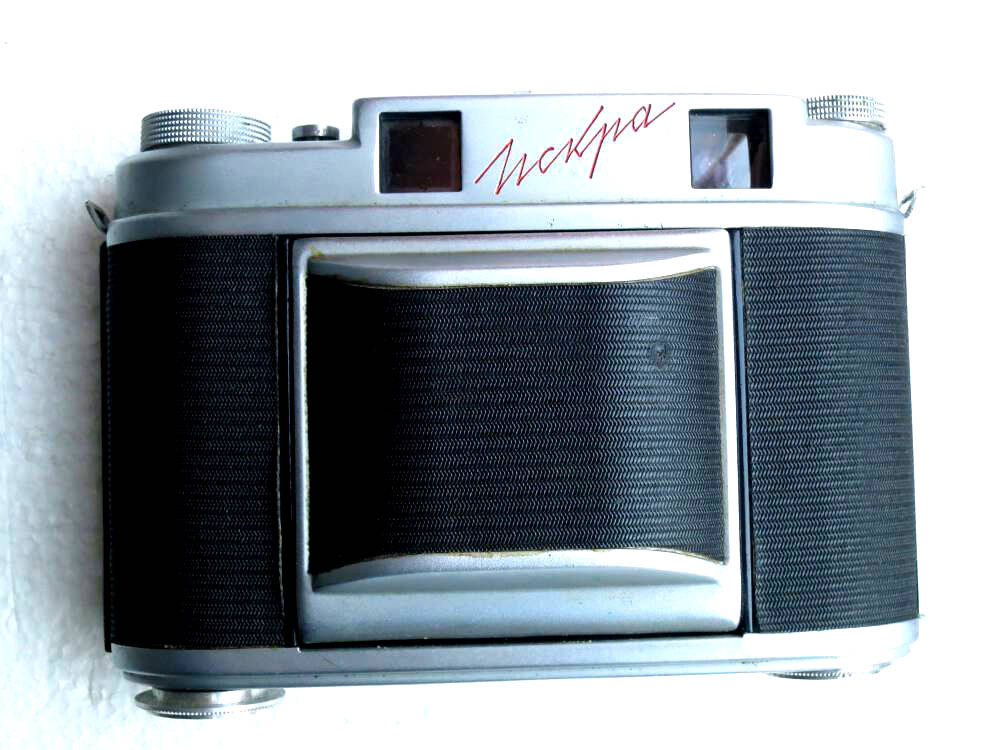
Camera
front closed. Top: film advance, shutter button, rangefinder window, viewfinder window and film type reminder.

Seen
from the back. On top: Film type reminder, viewer, shutter button, film advance.
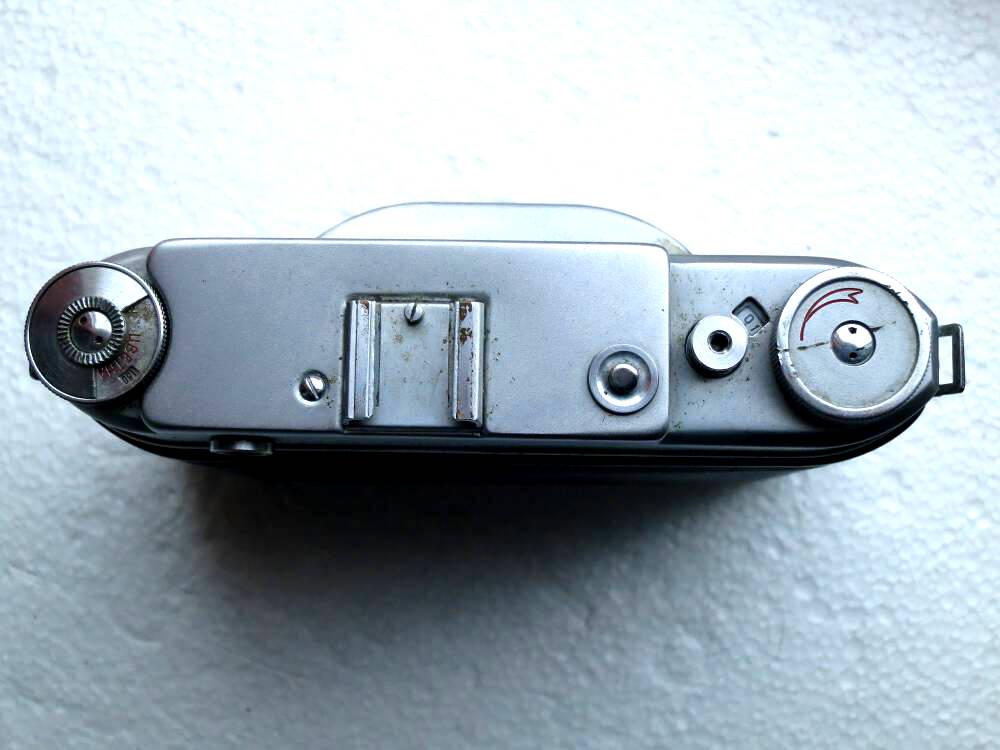
Seen
from above. Film type and speed reminder, accessory shoe, opening
button, shutter release button, film counter and film advance knob.
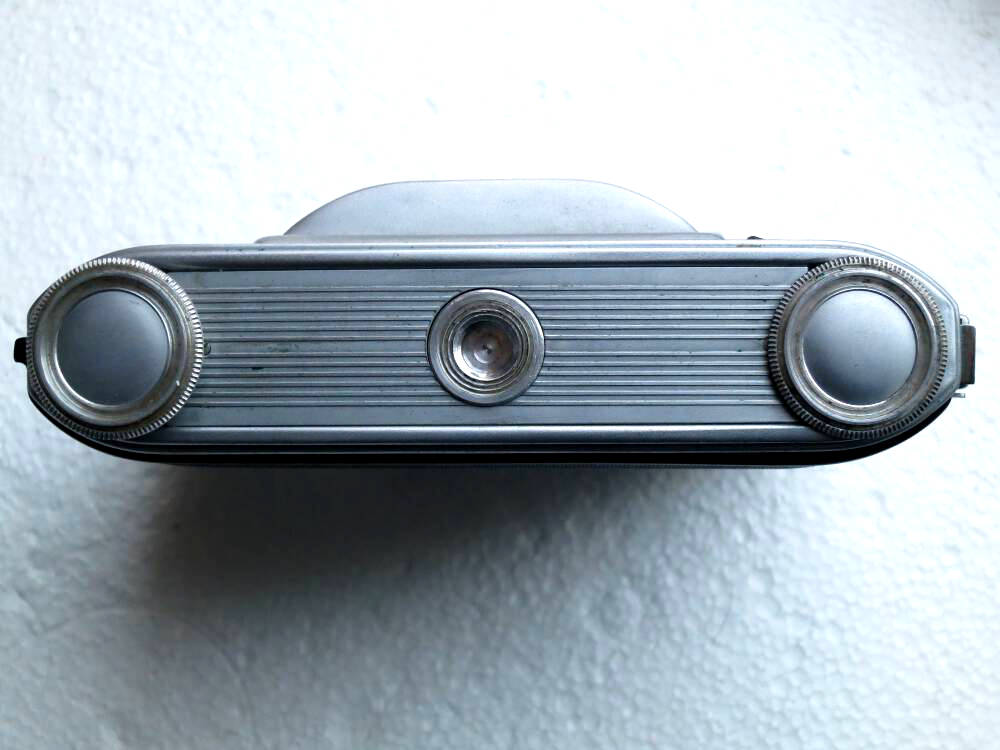
Seen from the bottom. Tripod socket.
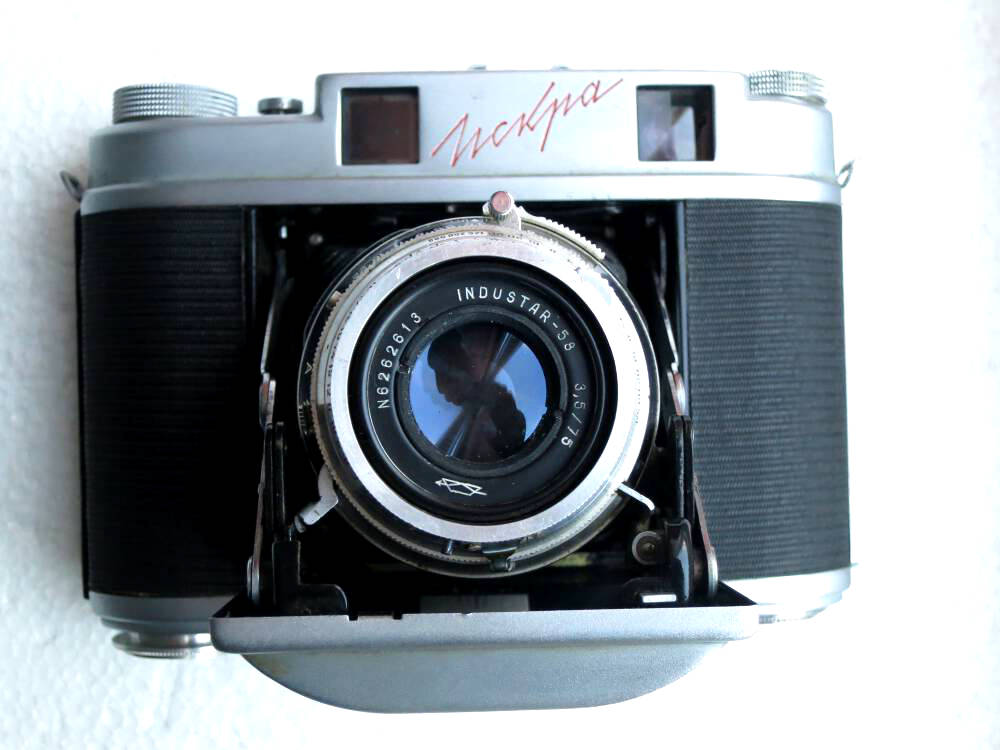
Camera
front open. Little lever: shutter cocking.
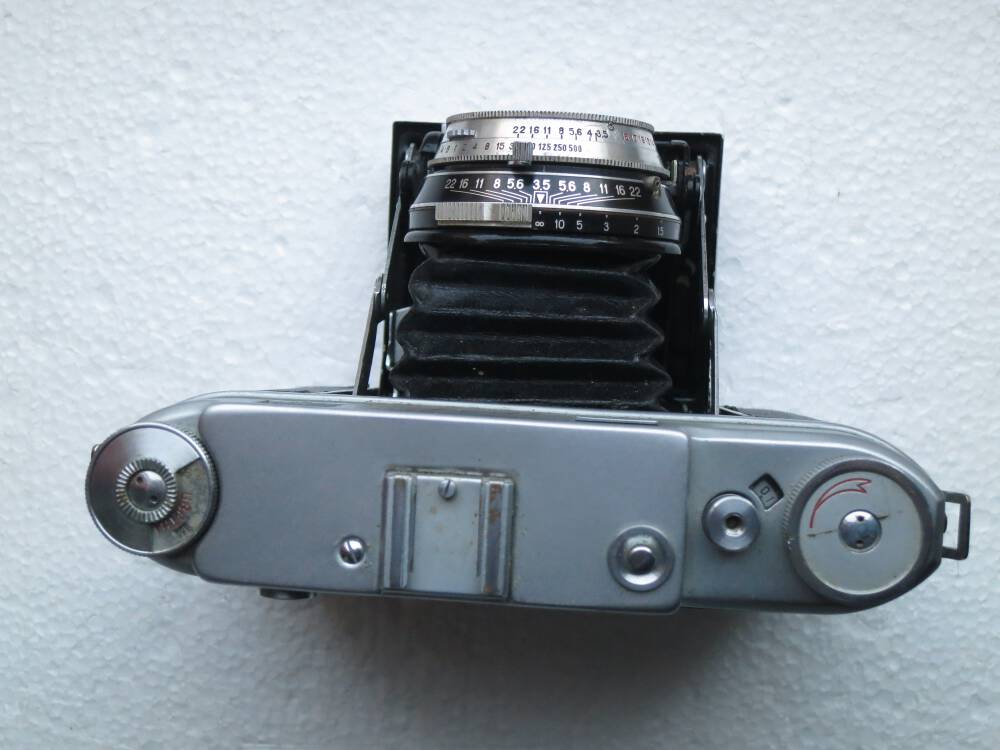
Seen
from above, camera open. Focusing at infinity. Aperture/speed ring,
shutter cocking lever, depth-of-the-field scale. focusing ring. The
camera was built for the light value system, so aperture and speed
are
connected (LV scale on the next photo). Once set to the appropriate
light value, there is a choice different shutter speed/aperture
combinations, you change the speed and the appropriate aperture is set
at the same time.
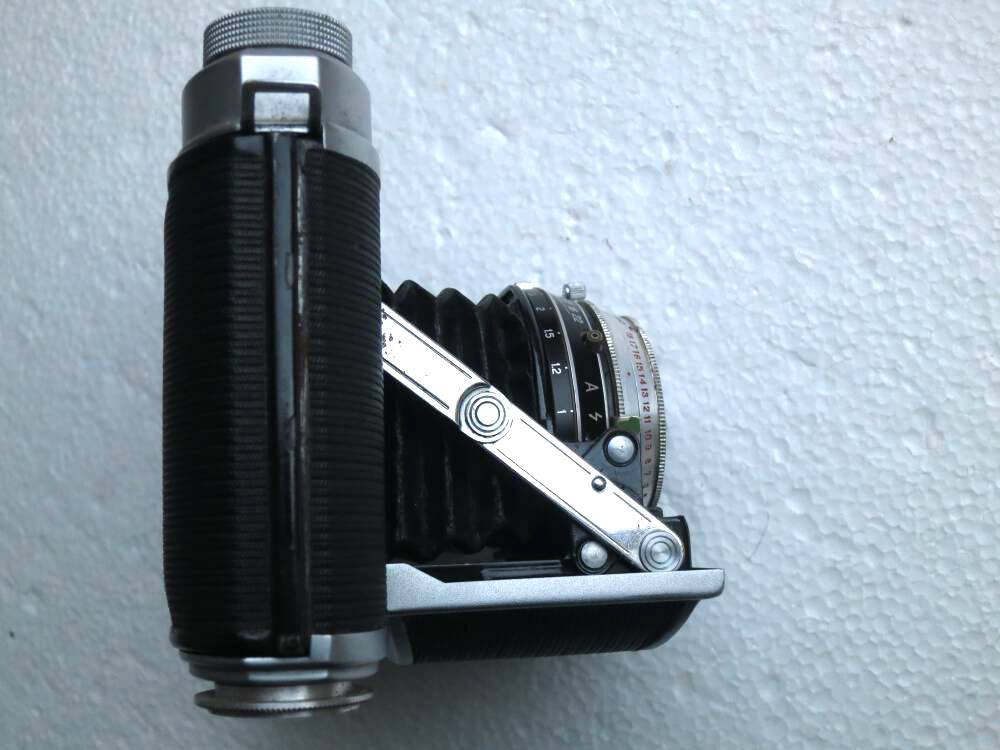
Left
side, camera open. Front (lens): light value scale, flash synchro,
distance scale. To change the light value, you have to lift the front
part of the ring and turn. Half values are possible. Setting on the
photo is between 14 and 15.
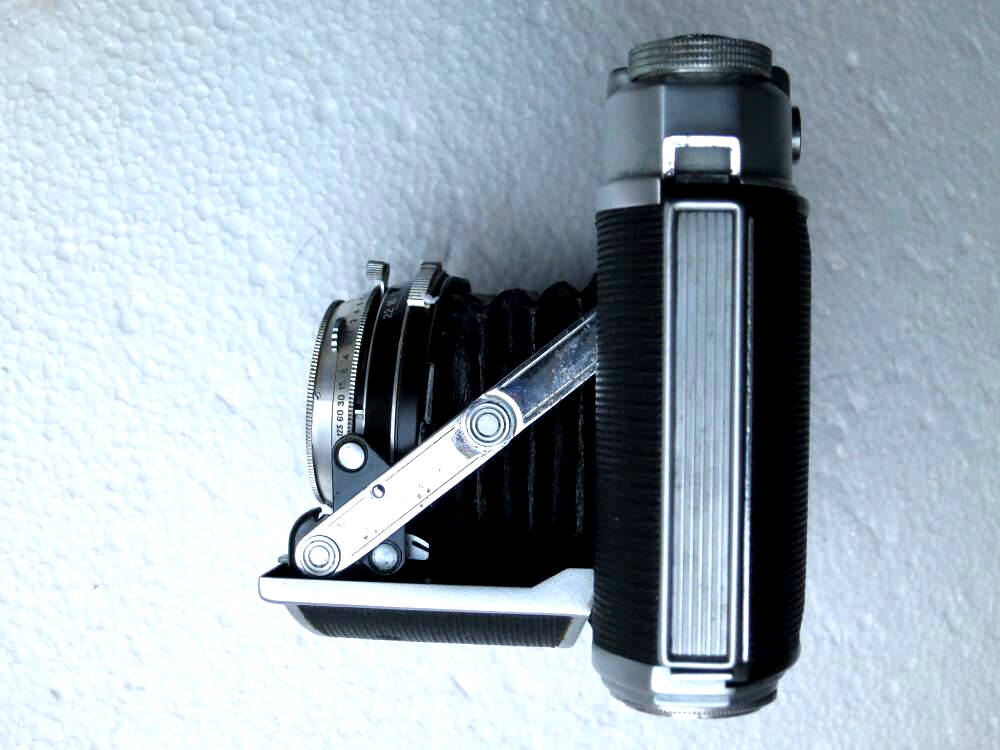
Right side.
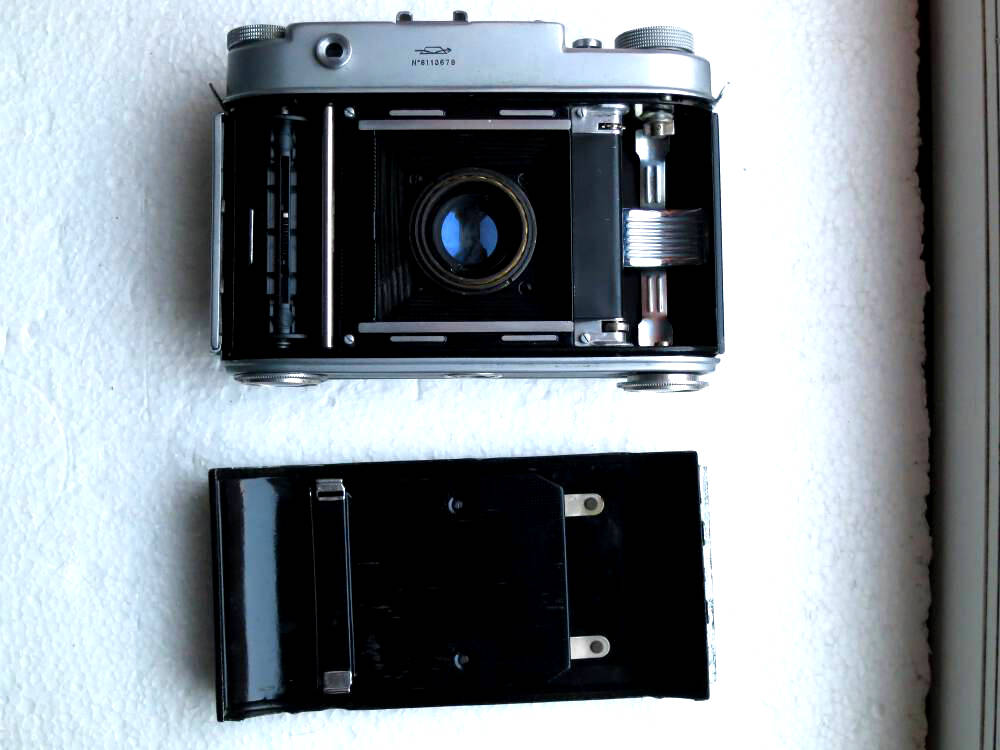 >>>
>>>
Camera back open. It's not hinged. The knobs on the bottom retract the pegs (right one in open position).
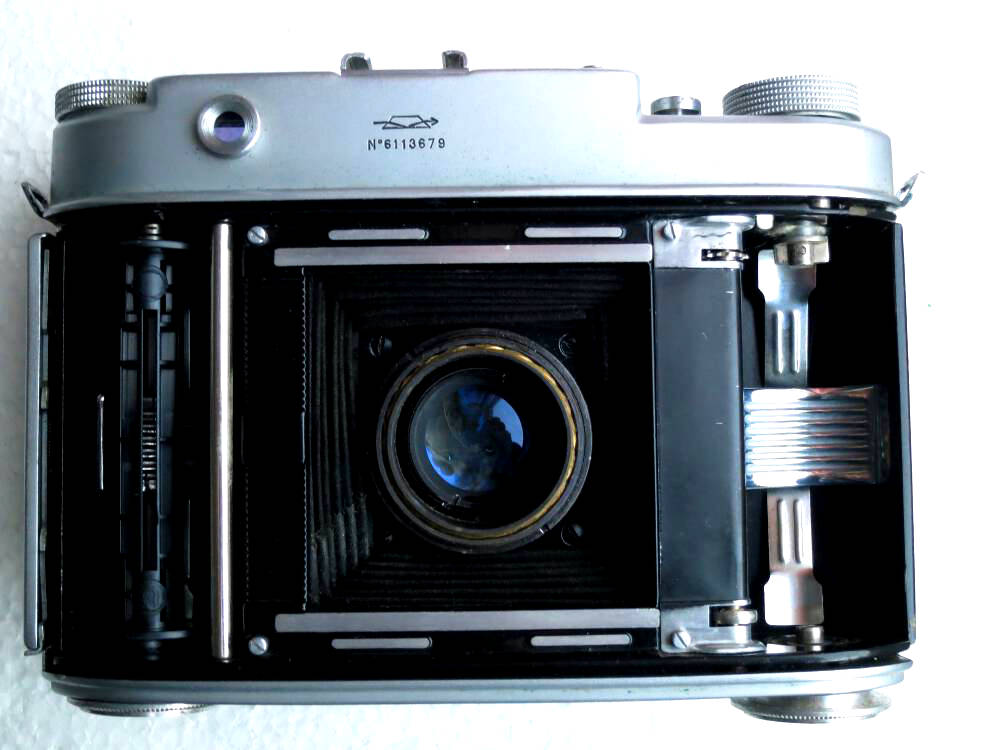
Film
chamber. Note the little dented wheel near the top of the chamber
(towards the film advance) and the small roll near the bottom,
both part of the automatic film advance.
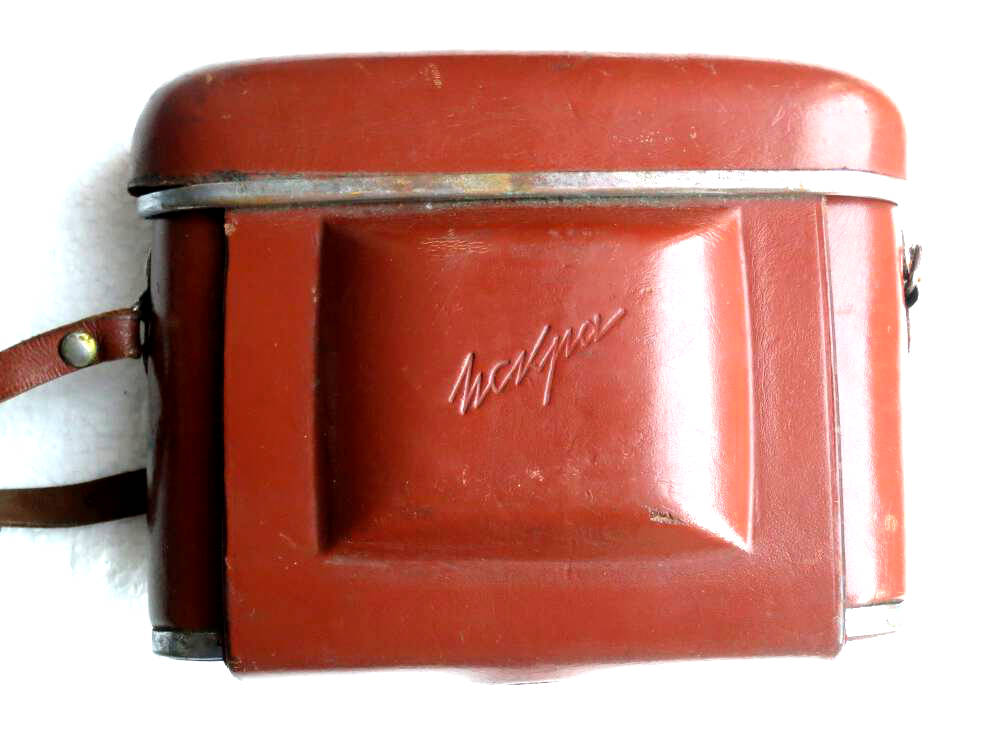
Original leather case.
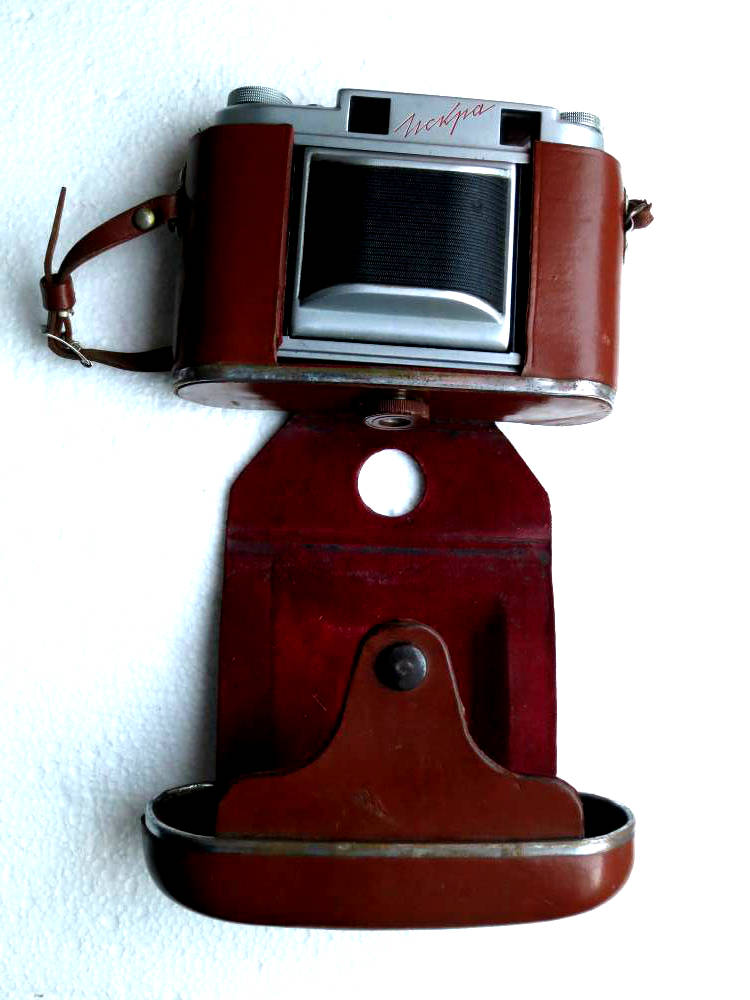
Leather case open.
Handling
an Iskra is easy, it's mostly like
other folding rangefinders. Loading film is quite as usual, very easy
because the pegs retract by turning the knobs on the bottom
counter-clockwise. Open
the
camera back, retract the peg and put the
take-up spool into
place. Turn the knob clockwise and the peg engages into the spool. Same
procedure for the film spool. The knobs are blocked when the back is
closed. Insert the film paper
backing
into the take-up spool and advance it using the advance knob until
it's
well engaged. Close the camera back. Now comes the magic part of the
film advance: Just turn the knob, it will detect the film start, it
will stop automatically and move the counter to "1".
Open
the camera. Cock
the shutter, set the light value (or the appropriate speed/aperture
combination), you have to lift the front part of the ring and then turn
to a new setting. Be cautious: You must change the shutter speed
for
1/500 before you cock the shutter. It's a good habit to do so for the
other speeds, it's less stress for the shutter system. And please don't
stock the camera with the shutter cocked. Set focus by the ring
near the bellows, focusing moves the lens out. Press the
shutter release button. That's it. The double exposure prevention
will block the release until you turn the film
advance. To
close the camera, set focus to infinity, press the hinges of the struts
as
usual, it will fold easily. Turn the film advance. It stops
automatically and shows
the next number.
The
Iskra is a very nice and very sturdy camera, it's on the bigger and
heavier end of the range. In comparison to my other camera models, mine
feels a bit rough, it maybe due to heavy use, but there is nothing to
worry about. I had no issues with it, neither with spacing nor with the
shutter or the film advance. The film advance is marvellous, I wish,
more cameras had this. The lens is very good. So it's a wonderful
camera, if everything is working as it should.
A general advice
for spacing problems. In "the old days", film and/or backing paper were
thicker than now. So the roll would be thicker and hence move film a
bit further if the automatic film advance is determined via turns of
the roll. If the spacing is too tight on your camera, there is an easy
trick to compensate to a certain degree: When you open a new roll, it's
held together by a paper strip around the roll. Open it cautiously and
leave a part of this strip attached to the backing paper. Insert the
paper strip into the take-up spool and wind. The beginnig of the
backing paper will follow. Wind, until it's firmly engaged. Your spool
core is now a little bit thicker than usual. This might solve your
problem, just have a try.
| Iskra | 880 | 154 x 110 x 43 | C | Auto, DEP | Industar-58 3.5/75 | 1 | B 1 - 1/500 | 22, LV | auto 1st frame |








 >>>
>>>

